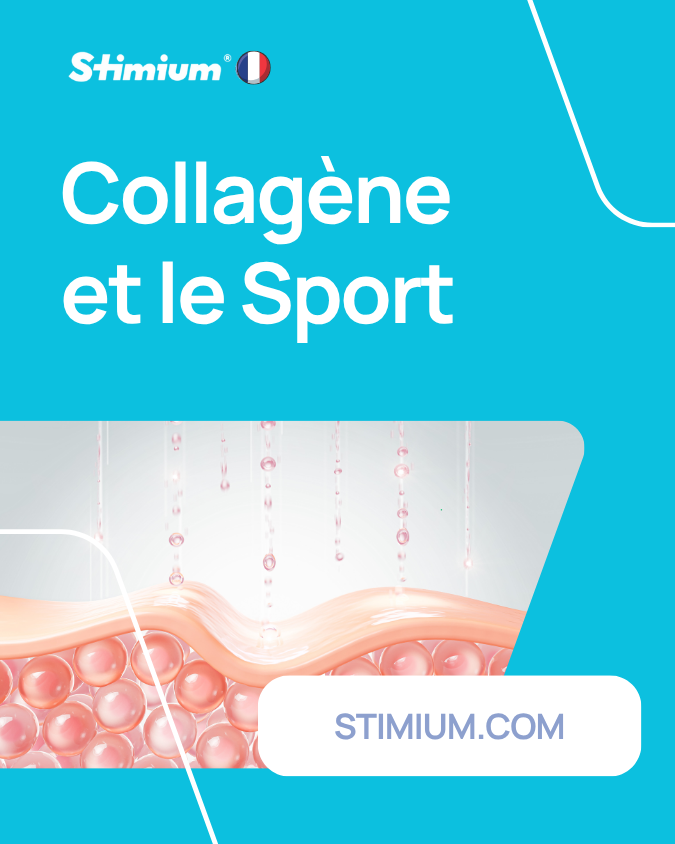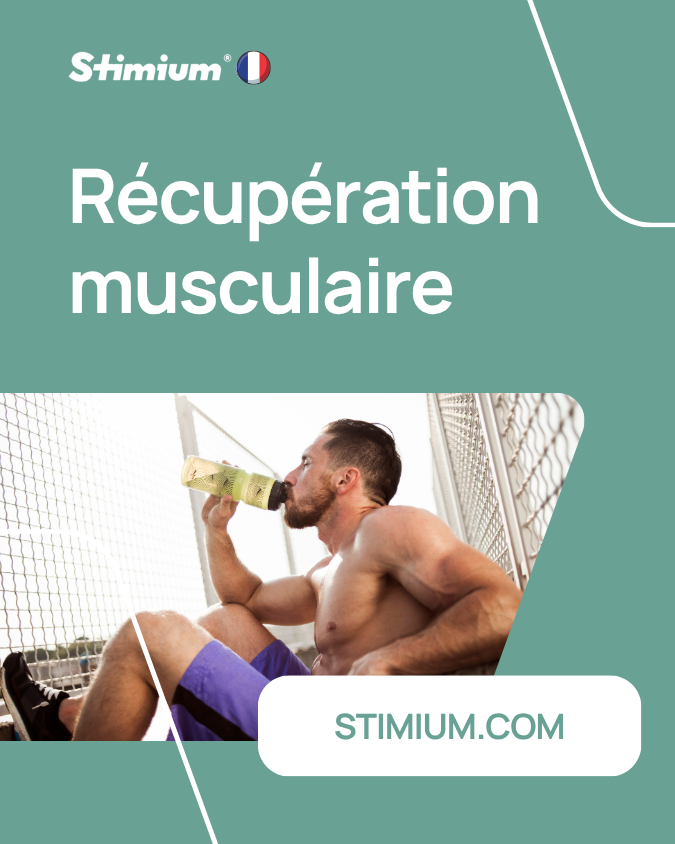Recovery exercises: Optimize your rest
Muscle recovery is an essential element of any sporting activity. It helps promote muscle growth, improve performance and prevent injuries. Thanks to our products and expert advice, you will be able to maximize the benefits of your sports sessions and keep your body in great shape.
Muscle recovery methods
To optimize your muscle recovery, there are different methods and techniques to put into practice. Below we present some of the most effective:
1. Specific exercises:
Incorporating specific recovery exercises into your training program can speed up the muscle recovery process. These targeted exercises aim to release tension and promote recovery of the muscles used. For example, you can include gentle stretching, joint rotation movements, and mobilization exercises to stimulate blood circulation.
2. Recovery training:
Recovery training involves performing low-intensity, low-frequency exercises after an intense workout. This helps facilitate the elimination of lactic acid accumulated in the muscles, improves blood circulation and promotes muscle recovery. For example, you can do light walks, yoga or active stretching.
3. Adapted programs:
It may be beneficial to follow a recovery program specifically designed to meet your individual needs. These programs may include stretching sessions, relaxation exercises and specific recovery techniques. They are designed to promote rest and muscle repair, while preparing your body for upcoming workouts.
4. Recovery stretching:
Recovery stretching is an effective method for relaxing muscles and promoting recovery. It consists of gently stretching the muscles used during exercise, in order to prevent stiffness and muscle pain. Including recovery stretching exercises in your routine can contribute to faster recovery and improved muscle flexibility.
5. Relaxation and breathing exercises:
Relaxation exercises, such as meditation and yoga, can help reduce stress and muscle tension, promoting better recovery. Practicing deep breathing techniques can also help oxygenate the muscles and relax the body. It is therefore beneficial to include relaxation and breathing exercises in your recovery routine.
By experimenting with these different muscle recovery methods and techniques, you will be able to find the ones that work best for you. Remember to consult a healthcare professional or qualified trainer for personalized advice tailored to your needs.
Importance of sports recovery
Sports recovery is essential to prevent injuries, improve performance and promote muscle growth. It allows our body to recover after intense effort, restore energy reserves and reduce the risk of overwork. Good sports recovery helps maintain our level of fitness and optimize our results.
One of the most effective recovery methods is to practice specific exercises that promote muscle relaxation, reduce pain and release tension accumulated during exercise. These recovery exercises can target different parts of the body, such as stretching to soften the muscles, relaxation exercises to soothe the mind and body, or breathing exercises to optimize oxygenation of the muscles.
By integrating appropriate recovery exercises into our training routine, we can improve our ability to recover quickly after exercise, allowing us to return to our physical activities more quickly and more efficiently. These recovery exercises can also stimulate blood circulation, promote the elimination of toxins and strengthen our immune system, which helps prevent injuries and illnesses related to strenuous physical exertion.
The different recovery techniques
Among the most common muscle recovery techniques, we find:
- Stretching: Performing stretches after exercise helps relax the muscles, improve their flexibility and promote muscle recovery.
- Muscle compression: Using compression garments or elastic bandages can help reduce muscle pain and promote blood circulation.
- Cold or hot baths: Baths alternating between cold and hot water stimulate blood circulation, reduce inflammation and promote muscle recovery.
- Cryotherapy: This technique involves exposing the body to very low temperatures (-160°C) for a short period, which promotes muscle recovery by reducing inflammation and relieving pain.
- Electrical stimulation: The use of electrostimulation devices allows muscles to contract and relax, thus promoting muscle recovery.
- Massages: Muscle massages help relax muscles, reduce tension and promote blood circulation, thus contributing to muscle recovery.
Each of these techniques can be used in addition to specific recovery exercises to optimize results and improve muscle recovery.
Muscle recovery program
A well-planned muscle recovery program can help maximize the benefits of recovery exercises. It may include:
Stretching sessions:
- Stretch each muscle group in a gentle, controlled manner to promote muscle relaxation and improve flexibility.
- Focus on the areas that were used during your workout.
Relaxation exercises:
- Practice relaxation techniques such as yoga or meditation to help relax the body and mind.
- Allow yourself moments of calm and rest to allow your body to recover effectively.
Massages:
- Get a massage from a professional to release muscle tension.
- Use specific massage techniques to promote blood circulation and reduce inflammation.
Compression techniques:
- Use compression techniques such as resistance bands or compression garments to promote muscle recovery.
- These techniques help reduce muscle pain and prevent cramps.
The objective of this muscle recovery program is to promote muscle relaxation, the reduction of inflammation and the restoration of energy reserves. By paying particular attention to these recovery methods, you will optimize your rest and improve your sports performance.
The benefits of recovery stretching
Recovery stretching is an essential exercise to integrate into your muscle recovery routine after intense exercise. By stretching the muscles used during training, stretching promotes muscle relaxation and improves flexibility. Here are some of the benefits of recovery stretching:
- Muscle relaxation: By stretching the muscles, stretching helps to relax the tensions accumulated during physical effort, thus promoting a feeling of relaxation and well-being.
- Improved flexibility: Regular stretching exercises help soften muscles and joints, which improves mobility and prevents muscle stiffness.
- Reduced pain: Stretching helps reduce post-workout muscle pain, by promoting blood circulation and the elimination of toxins accumulated in the muscles.
- Injury Prevention: A flexible, well-stretched body is less prone to injury. Recovery stretching helps prevent aches, muscle cramps and overuse injuries.
To achieve the best results, it is recommended to incorporate targeted stretching exercises into your recovery routine. Focus on the muscle groups used during your workout and perform static or dynamic stretches, holding each position for approximately 15 to 30 seconds. Make sure you don't force it and listen to your body to avoid injury.
Relaxation and breathing exercises for recovery
Relaxation exercises, such as meditation or yoga, are excellent practices to promote relaxation of the body and mind, which can contribute to better muscle recovery. By focusing on breathing and letting go of tension, these exercises help soothe the nervous system and reduce stress caused by intense physical exertion.
When we perform relaxation exercises, our body releases feel-good hormones, which promotes the recovery process. In addition to calming the mind, these exercises allow the muscles to relax and regenerate, which improves blood and lymphatic circulation, thus facilitating muscle recovery.
Conclusion
In this article, various muscle recovery methods are explored to optimize relaxation, regeneration and sports performance. Among these methods, the use of specialized products like our STIMIUM MC3 product can also play a crucial role.
Alongside specific exercises, stretching and relaxation techniques, STIMIUM MC3 presents itself as a complementary solution to promote muscle recovery. By relying on expert advice and the use of suitable products, you can maximize the benefits of your sports sessions, thus providing your body with the care necessary for optimal recovery.
FAQs
What are the benefits of muscle recovery exercises?
Muscle recovery exercises help reduce muscle pain, release tension and promote rapid recovery after exercise. They play a vital role in injury prevention, performance improvement and muscle growth.
What are the most effective muscle recovery methods?
Some of the most effective muscle recovery methods include stretching, muscle compression, hot or cold baths, cryotherapy, electrical stimulation and massage. Each of these techniques can be used in addition to specific recovery exercises to optimize results.
How important is sports recovery?
Sports recovery is essential to prevent injuries, improve performance and promote muscle growth. It also helps reduce muscle pain, recover quickly after exercise and promote the regeneration of muscle tissue.
What are the different recovery techniques?
Different recovery techniques include stretching, muscle compression, hot or cold baths, cryotherapy, electrical stimulation and massage. These techniques can be used in addition to specific recovery exercises to achieve optimal results.
How to develop a muscle recovery program?
A well-planned muscle recovery program may include stretching sessions, relaxation exercises, massage and the use of compression techniques. The goal is to promote muscle relaxation, reduce inflammation and restore energy reserves.
What are the benefits of recovery stretching?
Recovery stretching allows you to stretch the muscles after intense exercise. It promotes muscle relaxation, improves flexibility, reduces pain and prevents injuries. Targeted stretching exercises can be incorporated into your recovery routine to achieve better results.
How can relaxation and breathing exercises contribute to muscle recovery?
Relaxation exercises, such as meditation or yoga, promote relaxation of the body and mind, which contributes to better muscle recovery. Likewise, practicing deep breathing exercises helps reduce stress and optimize recovery after intense physical effort.
How to optimize muscle recovery through specific exercises?
By integrating appropriate recovery exercises into your training routine, you can maximize the benefits of your sports sessions, improve your performance and avoid injuries. Whether through stretching, relaxation or specific recovery techniques, it is essential to give your body the rest and care it needs for optimal muscle recovery.







